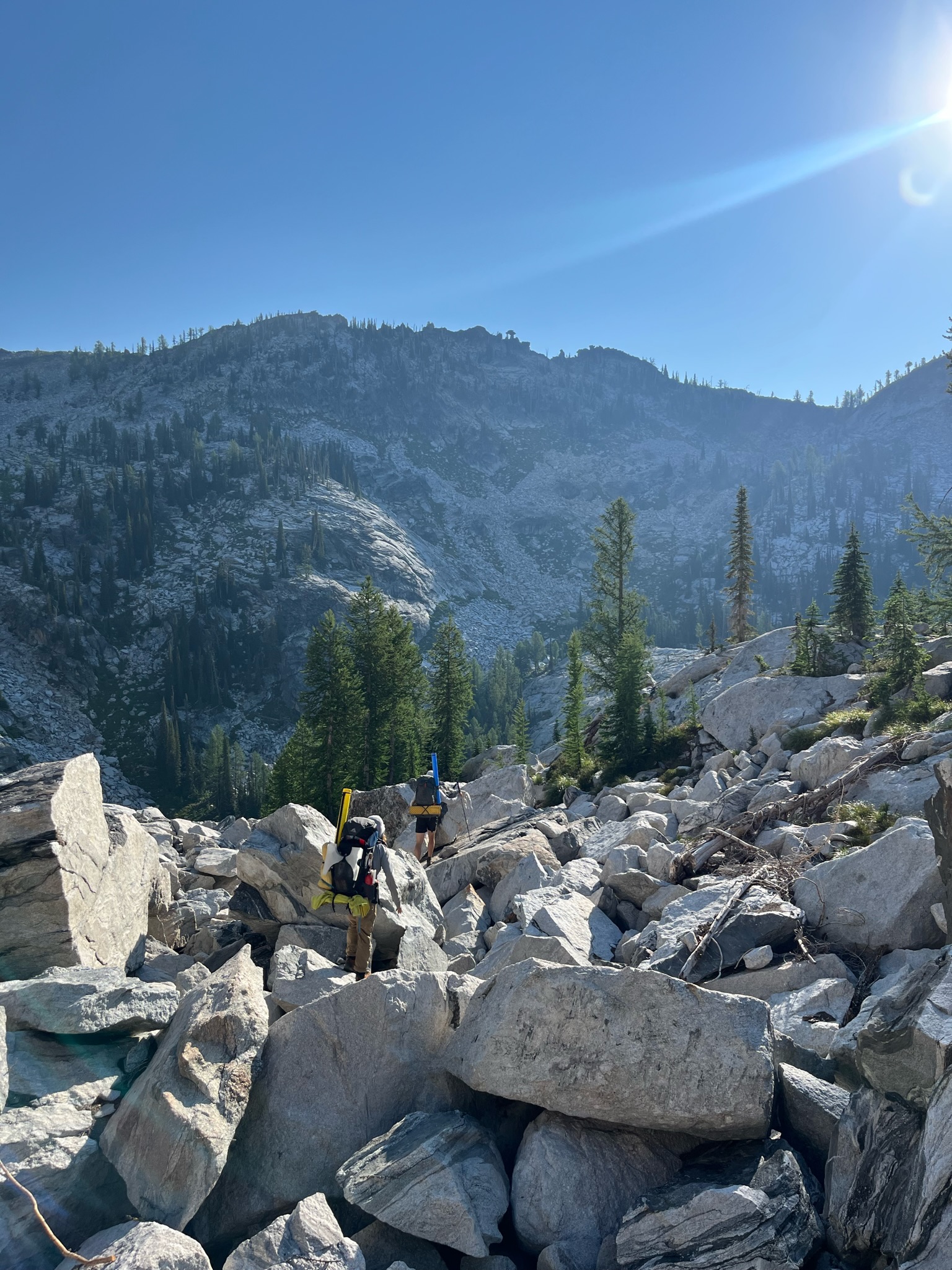Join the Northern Rockies Fire Science Network and the Whitebark Pine Ecosystem Foundation for a joint webinar by Josh Beisel. Josh is a PhD candidate at the University of Montana studying tree-tree interactions, impacts of shifting weather patterns on forest ecosystems, and whitebark pine ecology.
Whitebark pine (WBP) is well suited to regenerate following wildfires in subalpine forests; however, questions remain regarding how fire may influence recruitment across its elevational distribution — especially as that distribution is predicted to shift as future weather may become warmer and dryer.
To investigate drivers of whitebark pine regeneration we used seedling and sapling count data collected from a 2×2 factorial study (burned and unburned sites in upper and lower elevation positions) within the treeline ecotone of the Selway-Bitterroot Wilderness, MT/ID, USA. WBP regeneration density was most strongly associated with higher elevations, proximity to large adult WBP, and increased density of heterospecific regeneration. While we found little evidence for a solitary effect of fire on WBP regeneration at our sites, interactions between fire and topographic position suggest increased regeneration in burned sites on warmer aspects and steeper slopes. These findings highlight the nuanced effects of fire and the relative importance of elevation and suitable topoedaphic conditions for natural regeneration of WBP under current and future conditions.
Recording(s)
Event Details
Nov 18 2025, 11am - 12pm Pacific Time
